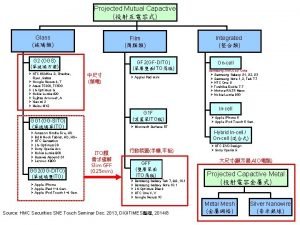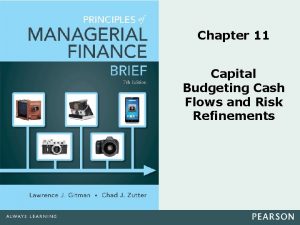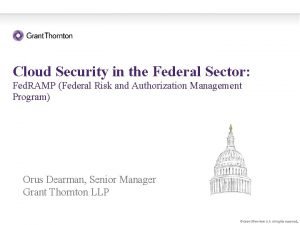FED TAPERING QE CAPITAL FLOWS Understanding QE Capital















- Slides: 15

FED TAPERING QE & CAPITAL FLOWS

Understanding QE & Capital Flows – By Prof. Simply Simple TM

QE & CAPITAL FLOWS These days we read a lot about “QE & Capital Flows”. They appear to be a part of most discussions going around. So what is QE and how is it connected to capital flows?

QE & CAPITAL FLOWS 1. QE or Quantitative easing refers to the printing of excess dollars by the US. 2. The reason US prints dollars is for their Federal Reserve to purchase government bonds, mortgage securities & stakes in financial institutions. 3. Thus it increases bond prices which improves credit availability & stabilizes financial balance sheets. 4. Due to a slowing economy, the US does not want to raise interest rates. 5. In that sense, QE helps to keep US interest rates low.

QE & CAPITAL FLOWS 6. However the excess dollars that buy bonds & other securities have to find some outlet for further investment. 7. Some amount perhaps goes towards government spending while the balance finds its way for investments. In search of potentially attractive investment avenues, the excess dollars find their way into emerging economies like India as part of “Capital Flows”.

QE & CAPITAL FLOWS So Capital Flows, in a sense, represent the flow of US dollars into our economy. In times like these when the returns in US are abysmally low, it is quite natural for investors over there to look at other alternatives to make investments. In this regard, the Indian equity markets are one of the more popular destinations these days. Nearly 25 billion US dollars have flowed into our economy in this calendar year.

QE & CAPITAL FLOWS When foreign capital flows into the Indian economy the following are its effects: - 1. The value of the rupee goes up because first the international investor has to purchase the rupee to invest in our markets 2. When the value of the rupee goes up, our exports become less competitive and causes job losses. 3. The RBI needs to intervene in the currency markets by buying US dollars to keep a control over the rupee appreciation. 4. Thus foreign exchange reserves go up.

QE & CAPITAL FLOWS 5. The flood of rupees to buy the dollars can cause inflation to go up. 6. The RBI may then float bonds to suck out the excess rupees in the system. 7. Excess capital flows inhibit the central bank from raising interest rates as it can induce more foreign capital to flow in due to the arbitrage advantage (our economy offers higher fixed returns than theirs & hence there is an opportunity to borrow there and invest here).

QE & CAPITAL FLOWS So why is it so difficult for the RBI to handle this situation? The reason for this is that RBI actions can work at cross purposes. For example: 1) If RBI buys US dollars to keep the value of the Indian rupee low for the sake of exporters, it can cause inflation to go up. 2) If RBI sucks out the excess “rupees” in the system by issuing bonds, it will have to offer an attractive interest rate which, in turn, will cause overall interest rates to go up and thereby increase the capital flows instead of controlling it.

QE & CAPITAL FLOWS q Hence the RBI has to do a balancing act. q In the case of India, most of the capital flows are moving towards equities and less towards fixed income instruments. q Hence the RBI has some room to increase interest rates on one hand thereby be in a position to intervene in the currency markets and regulate the value of the Indian rupees keeping in mind the needs of exporters.

QE & CAPITAL FLOWS Why are capital flows a problem? 1. Capital flows can increase the value of the rupee making it difficult for the exporters 2. They can create asset bubbles & increase commodity prices. 3. They can be erratic and in that sense can get withdrawn in a short time interval causing asset markets’ bubble to burst.

QE & CAPITAL FLOWS 1. But capital flows also have an advantage for a country like India which has a current account deficit. 2. The capital flows can help reduce this deficit in the economy and that makes it easier for the government to borrow at lower rates from the public. 3. However once the deficit is managed, the excess capital flows would overflow into the economy and cause problems such as rupee appreciation and hurt exports.

QE & CAPITAL FLOWS Hope this lesson has succeeded in further clarifying the concept of ‘QE as well as Capital Flows’. A

Please give me your feedback at professor@tataamc. com

DISCLAIMER The views expressed in this lesson are for information purposes only and do not construe to be any investment, legal or taxation advice. The lesson is a conceptual representation and may not include several nuances that are associated and vital. The purpose of this lesson is to clarify the basics of the concept so that readers at large can relate and thereby take more interest in the product / concept. In a nutshell, Professor Simply Simple lessons should be seen from the perspective of it being a primer on financial concepts. The contents are topical in nature and held true at the time of creation of the lesson. This is not indicative of future market trends, nor is Tata Asset Management Ltd. attempting to predict the same. Reprinting any part of this material will be at your own risk. Tata Asset Management Ltd. will not be liable for the consequences of such action. Mutual Fund investments are subject to market risks, read all scheme related documents carefully.
 Forward contract hedging
Forward contract hedging Tapering fed
Tapering fed Tpn tapering guidelines
Tpn tapering guidelines Tapering qe
Tapering qe Spiral angle of bur
Spiral angle of bur How to find change in working capital
How to find change in working capital Advantages of capital budgeting
Advantages of capital budgeting Never let a thought shrivel and die meaning
Never let a thought shrivel and die meaning How to install an end fed wire antenna
How to install an end fed wire antenna Fed ramp
Fed ramp Lipogenesis
Lipogenesis Who owns the federal reserve rothschild
Who owns the federal reserve rothschild Ez fed grants login
Ez fed grants login Flower fed buffaloes
Flower fed buffaloes Series fed class a amplifier
Series fed class a amplifier How is the fed organized
How is the fed organized




























